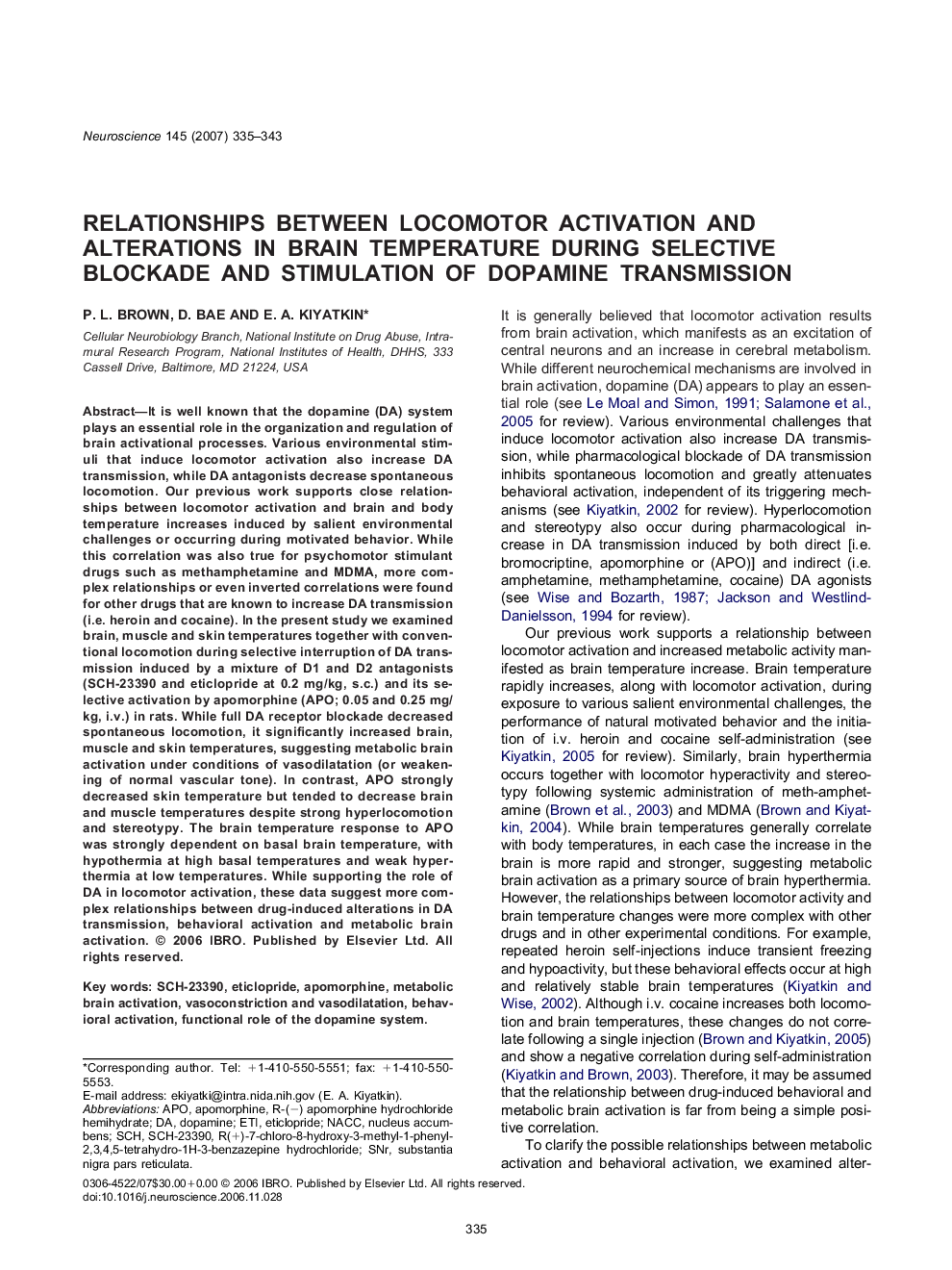| کد مقاله | کد نشریه | سال انتشار | مقاله انگلیسی | نسخه تمام متن |
|---|---|---|---|---|
| 6278568 | 1295823 | 2007 | 9 صفحه PDF | دانلود رایگان |
عنوان انگلیسی مقاله ISI
Relationships between locomotor activation and alterations in brain temperature during selective blockade and stimulation of dopamine transmission
دانلود مقاله + سفارش ترجمه
دانلود مقاله ISI انگلیسی
رایگان برای ایرانیان
کلمات کلیدی
موضوعات مرتبط
علوم زیستی و بیوفناوری
علم عصب شناسی
علوم اعصاب (عمومی)
پیش نمایش صفحه اول مقاله

چکیده انگلیسی
It is well known that the dopamine (DA) system plays an essential role in the organization and regulation of brain activational processes. Various environmental stimuli that induce locomotor activation also increase DA transmission, while DA antagonists decrease spontaneous locomotion. Our previous work supports close relationships between locomotor activation and brain and body temperature increases induced by salient environmental challenges or occurring during motivated behavior. While this correlation was also true for psychomotor stimulant drugs such as methamphetamine and MDMA, more complex relationships or even inverted correlations were found for other drugs that are known to increase DA transmission (i.e. heroin and cocaine). In the present study we examined brain, muscle and skin temperatures together with conventional locomotion during selective interruption of DA transmission induced by a mixture of D1 and D2 antagonists (SCH-23390 and eticlopride at 0.2 mg/kg, s.c.) and its selective activation by apomorphine (APO; 0.05 and 0.25 mg/kg, i.v.) in rats. While full DA receptor blockade decreased spontaneous locomotion, it significantly increased brain, muscle and skin temperatures, suggesting metabolic brain activation under conditions of vasodilatation (or weakening of normal vascular tone). In contrast, APO strongly decreased skin temperature but tended to decrease brain and muscle temperatures despite strong hyperlocomotion and stereotypy. The brain temperature response to APO was strongly dependent on basal brain temperature, with hypothermia at high basal temperatures and weak hyperthermia at low temperatures. While supporting the role of DA in locomotor activation, these data suggest more complex relationships between drug-induced alterations in DA transmission, behavioral activation and metabolic brain activation.
ناشر
Database: Elsevier - ScienceDirect (ساینس دایرکت)
Journal: Neuroscience - Volume 145, Issue 1, 2 March 2007, Pages 335-343
Journal: Neuroscience - Volume 145, Issue 1, 2 March 2007, Pages 335-343
نویسندگان
P.L. Brown, D. Bae, E.A. Kiyatkin,